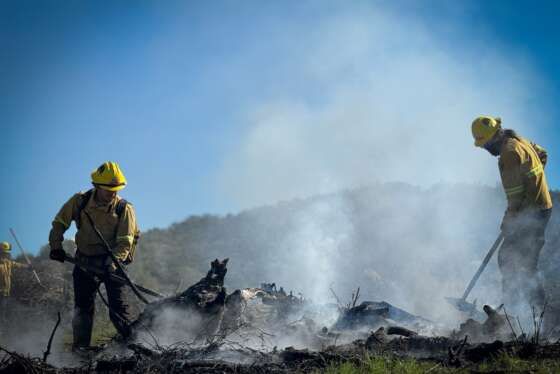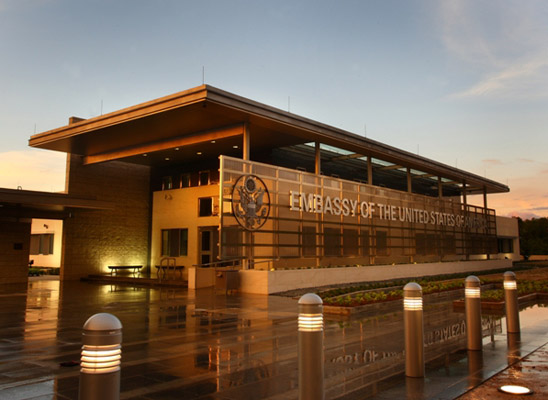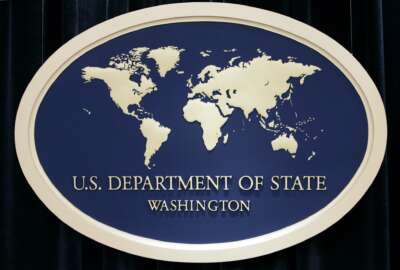Hubbard Radio Washington DC, LLC. All rights reserved. This website is not intended for users located within the European Economic Area.
After 9/11, State’s embassies balance security and aesthetics
The Sept. 11 attacks came years after a mandate to standardize security at embassies worldwide. The result was prison-like structures. The State Department is n...
By Jolie Lee
Federal News Radio
The State Department’s bureaus in charge of building and securing diplomatic facilities had a wake-up call years before Sept. 11, 2011, when terrorists bombed two East African embassies in 1998, killing more than 200 people and injuring thousands.
“I think the moral of this story is 9/11 was just another sad chapter in what’s been a continuous problem for us overseas,” said Bill Miner, director of design and engineering in State’s Bureau of Overseas Building Operations.
The 1998 bombings led to current security standards — both in construction and screening techniques — at the department’s 440 domestic and international embassies, consulates and other diplomatic facilities. The Secure Embassy Construction and Counterterrorism Act of 1999 standardized overseas facility construction and mandated each facility have an emergency action plan.
The years since the mandate have brought greater use of technology in threat detection. Devices like metal detectors, X-rays, security alarms and motion detection systems have allowed special agents to continually improve their ability to monitor activity around embassies, said Gentry Smith, deputy assistant secretary for countermeasures in State’s Bureau of Diplomatic Security.
As equipment has improved, so has information sharing. The bureau has a command center in the United States that operates 24/7 to monitor feds abroad.
“In the event there is an incident, there is that link there that people back in headquarters will have awareness of what’s going on,” Smith said.
The Sept. 11 also changed the way embassies are built. For example, the department designs buildings now so that damage to one section of a structure will not cause the rest of the structure to fall.
“A catastrophic collapse was the kind of building failure we saw in the World Trade Center where it had a sort of domino effect, one floor falling onto others that eventually brought the structure down,” Miner said.
The event also highlighted the need to provide protection beyond embassies alone, Miner added. State employees who work and live overseas spend time in the communities outside of compound walls.
“We don’t want to overdo the protection of the office building and ignore some of the other areas where our people work and play,” Miner said.
Embassy Makeovers
The increase and standardization of embassy security since the late nineties had led to a series of cookie-cutter buildings that looked like “cheese graters” — fortress-like structures with tiny, punched-out windows to resist blasts, Miner said.
Citizens in the host countries did not see the landscaping or signage; they saw the nine-foot perimeter walls void of any texture, color or graphics.
Last year, State launched the Design Excellence Initiative to revamp the aesthetics and sustainability of embassies without sacrificing — and sometimes even boosting — security. Under the initiative, all new embassy construction will be LEED Silver certified. Currently, four embassies have the certification and 30 are applying, Miner said.
With the use of photovoltaic panels, heat pumps and even using wind energy at some sites, this new approach will cut down on energy costs and make embassies less dependent on local utilities.
“In a lot of locations, we’re it; we’re all we have. There is no fire department sometimes, no police department,” Miner said. “We’ve really had to become very self-sufficient, not only in terms of protection systems but power and water.”
The most obvious change for onlookers will be the embassies’ appearance. Instead of a hardened, defensive design, the buildings are becoming more attractive, open and inviting.
Miner said his most vivid memory after 9/11 was seeing the flowers, signs and other mementos piled in front of embassies worldwide.
“Embassies became a place that the global community saw as a place to pay their respects to people who had been wounded,” he said. “I’d rather think of that memory instead of some of the others.”
Copyright © 2024 Federal News Network. All rights reserved. This website is not intended for users located within the European Economic Area.
Foreign Service plans to rein in robust hiring efforts, following recent budget cuts
Related Topics
Fed Photo of the Day

Hogback Ridge Fuels Crew cleaning up after a pile burn near Kelseyville, CA
Daily photos of things happening in and around the federal government.




